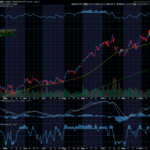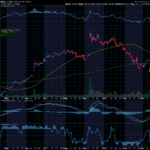by Jon Najarian
Jon “Doctor J” Najarian has used the CPR strategy for many, many years – a strategy he himself discovered and then popularized. In fact, it’s become somewhat famous and was one of the main topics the instructors of the Chicago Board Options Exchange (C.B.O.E.) taught at their seminars around the country!
The name ‘CPR’ is short for Current Portfolio Repair. Using the CPR strategy is first and foremost designed to “repair” a stock position. That’s right, just like a carpenter can repair a broken chair back to new, or like a doctor can set and cast a broken bone and have it ‘repaired’ one day – the CPR strategy can literally repair a damaged stock.
And the best part is this: it can help get you back to even on a stock, without the stock ever having to fully recover to the original price where you bought it! But, as good as it sounds, there are limits. For example, you couldn’t use CPR on a stock like Enron that nearly lost 98% of its value. No, the CPR works instead on stocks that have taken hits of 20, 30, 40, and even up to 50%. That’s not bad wouldn’t you say?!

Its aim is to get the money back that you’ve lost on a stock, without the stock ever having to fully recover the ground it has lost. To get a CPR strategy working on one of your stocks costs you nothing! In fact, the strategy works best when you actually receive a credit to your account at the time you implement the strategy.
However, it is important to note that just like with any trade – there is a downside and here it is: as soon as you put on a CPR play, you immediately ‘cap’ your upside. That is, if the stock you’re trying to repair starts to climb up dramatically after you do the CPR strategy, at a certain point you will miss out on the upside. You’ll profit, but only up to a certain point, then it’s no more after that.
Again, CPR is designed to get your money back, or ‘repair’ a stocks that’s been hit 20, 30, 40, or even 50% (sometimes more, it depends on the option premiums available on that stock) and that’s it.
With that being said, let’s do an example of a CPR in action. You bought 1,000 shares of a $90 stock and it’s been whacked down to $54. You’ve suffered a ‘paper’ loss so far of $36,000. At this crossroad, you normally have 4 choices:
- Sell the stock for a loss (bummer)
- Wait (boring)
- Try to write a covered call to take in some money (risky, because for the small amount of premium money you take in, you risk getting your stock “called away from you” which would mean selling your stock for a lot less than you paid for it in this example)
- Buy more stock (if you’ve got the guts, money and time)
Or, you can enter in the CPR strategy.
I will now look out normally 2 months. For example, if we were in the month of August, I’d look out at the October options. If you can make the numbers work in Sept, more power to you, but that’s rarely the case… which I will explain in a second.
With the stock currently at $54, and in this example we own 1,000 shares, the CPR strategy is to buy 10 call contracts of the Oct 55 calls, during sometime in August, and simultaneously sell 20 of the Oct 65 calls. Again, we are doing this with the stock trading in August at $54 per share.
You always want to try for a $10 spread between the option strike prices, and it’s ideal when you can do this for a credit – even a slight credit. At first this looks naked and you may be saying “wait a minute, if I’m selling 20 contracts which represents 2,000 shares of stock, and I’m only buying 10 contracts which represents 1,000 shares – that means I’m still ‘naked’ 10 call contracts!” This is what most people say. But… remember, you ALREADY OWN 1,000 shares.
You already own 1,000 shares of XYZ. And with the CPR strategy you buy 10 call contracts – then sell 20 call contracts. So, as you can see, with the 1,000 shares you already own, this is completely “covered” with no extra margin requirements whatsoever. And ANYONE can do this type of trade with no extra approval.
Let’s get back to the numbers in this example. You’ve got a stock that’s taken a big hit all the way down from $90 where you bought it, and it’s sitting at $54. We’re back in August and you’ve now just bought 10 of the Oct 55 calls and sold 20 of the Oct 65 calls. And let’s say, for sake of this example that the Oct 55 calls were trading for $6 per contract and the Oct 65 calls were trading for $3.25 per contract.
By selling 20 contracts of the Oct 65 calls for $3.25, that equals a $6,500 credit ($3.25 x 100 x 20). By buying 10 contracts of the Oct 55 calls at $6.00 each, that equals a $6,000 cost ($6.00 x 100 x 10).
So in this example, by implementing the CPR strategy, you would receive a “net credit” of $500. Not bad!
Here’s what happens in a nutshell with the CPR: Any move up in the stock (from its current price of $54 to $65) doubles your normal return. If it goes higher than $65, you don’t make any further gains, the maximum money you’ll make is capped at $65. But you know this going in.
And remember, you’re not going for big rebounding profits here… you’re simply trying to REPAIR a damaged stock that might not make a sudden upward move for a long time. If the stock doesn’t move higher or recover, you’re out nothing. In fact, you’re up slightly depending on what kind of a credit you were able to pull in.











Recent Comments